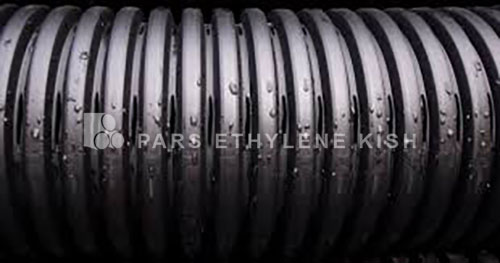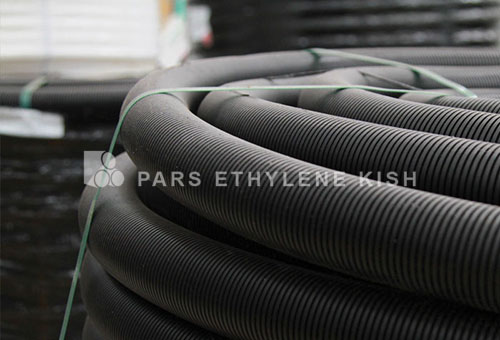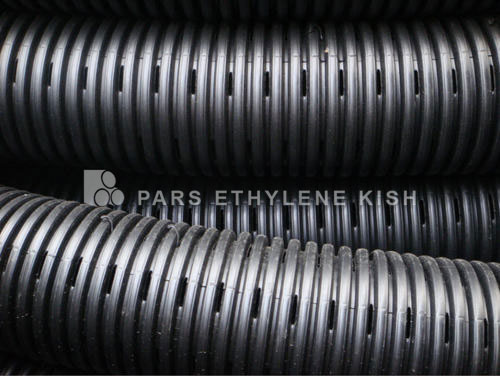
Drainage system
HDPE Drainage Pipe
HDPE Drainage Pipe is a drainage system which offers an alternative solution to cast iron. The term Drainage defines removing excess water from land. This has been quite common since the last 200 years. Although water collection occurs naturally but by means of drainage this natural process is expedited.
Most important usage of drains is in agriculture with the purpose of removing excess water of irrigation or rainfall. Applying underground drainage system provides the balance between water & oxygen of soil.
.jpg)
Installation Techniques
Drainage Pipe and fittings can be jointed in different techniques, as electro-fusion sockets, but fusion sockets, rubber ring (push fit) sockets, and flanged sockets are all applicable for HDPE drainage pipes and fittings.
Drainage systems inside buildings
HDPE drainage system can be used in residential buildings, commercial buildings, industrial buildings and laboratories.
Installations inside concrete
HDPE drainage pipes and fittings can be installed inside slaps and concrete thanks to its flexibility and high abrasion resistance.
External and underground drainage
Cosmoplast HDPE Drainage Pipe and fittings can be installed outside buildings underground thanks to its flexibility and resistance to crush and abrasion.
Lightweight
Cosmplast HDPE drainage system is light in weight compared to the traditional drainage systems which makes it easy for handling, storage and transportation.
Recreational & sports fields Drainage
Drainage is considered as the best method for fast water (rainfall & irrigation) collecting which prevents soil damage and provides better & longer land use.
Reasons for underground drainage
As a vital substance, water is always on demand for human beings; however too much water stand in soil leads to pond & wetland state.
Wetland reasons
-
Excess water of constant heavy rainfall, rivers, water transmission channels in agricultural lands and also excessive land irrigation with the purpose of soil improvement and washing out minerals from the root bed which is called “Leaching”, is one of the main reasons of note.
-
Rising groundwater levels (which has increased minerals & salt in soil by gradual evaporation and should be definitely removed)
-
Physical obstacles( roads, buildings, bridges) also prevent normal water flow.

Wetland effects of soil
Generally plants can tolerate wetland situation up to some hours and they start to wither after this period.
Wetland diminishes soil oxygen therefore respiration of plants root and soil organisms decreases which itself leads to temperature reduction. In this situation root of plants are not capable enough to absorb soil nutrients. All these factors cause reduction in agricultural production and plant loss. Wetland state in recreational/sport lands also makes them impassable and useless. Puddles around buildings or bridges can be dangerous even in short time. One of the most important factors for road surface damage is the excess water of rainfall or the underground water, usually icing on the surface of the roads in winter.
Drainage pipe data sheet
It is suggested that you read inspection chamber in drainage system article
|
DESCRIPTION
|
Outside Diameter(mm)
|
Standard
|
|
125
|
160
|
200
|
|
Number of holes in each row of on the circumference of the pipe
|
6
|
6
|
6
|
Din 1187
|
|
Number of hole containing rows in each meter of the pipe
|
86
|
84
|
61
|
Din 1187
|
|
Total number of holes in one meter of the pipe
|
516
|
504
|
366
|
Din 1187
|
|
Hole Dimensions (mm)
|
1/3*5
|
1/3*5
|
1/3*8
|
Din 1187
|
|
Cross sectional area of fluid in taking of holes(mm2)
|
6/5
|
6/5
|
10/4
|
Din 1187
|
|
Cross sectional area of fluid in one meter of the pipe (mm2)
|
3354
|
3276
|
3806
|
Din 1187
|
|
Mass of one meter of pipe (grams)
|
650
|
950
|
1400
|
Din 1187
|
|
Mean thickness of pipe (mm)
|
0/65
|
0/65
|
0/65
|
Din 1187
|
